Bangladeshis
|
| |
| Total population | |
|---|---|
| c. 173 million | |
| Regions with significant populations | |
| 168,957,745 (2015)[1] | |
| 1,309,004 (2013)[2] | |
| 1,089,917 (2013)[3] | |
| 451,529 (2011)[4] | |
| 352,005 (2013)[5] | |
| 279,169 (2013)[6] | |
| 220,403 (2013)[7] | |
| 150,000 (2015)[8] | |
| 148,314 (2013)[9] | |
| 113,811 (2011)[10] | |
| 100,444 (2013)[11] | |
| 47,951 (2013)[12] | |
| 27,809 (2011)[13] | |
| 24,600 (2006)[14] | |
| 12,099 (2016)[15] | |
| 9,641 (2014)[16] | |
| 8,514 (2014)[17] | |
| 11,000[18] | |
| 7,000[18] | |
|
392[19] | |
| Languages | |
| Bengali, English and others[20] | |
| Religion | |
|
| |
Bangladeshis (Bengali: বাংলাদেশী[24] [baŋlad̪eʃi]) are a nation and the citizens of Bangladesh. The country is named after the historical region of Bengal, of which it constitutes the largest and eastern segment. Bangladeshi citizenship was formed in 1971, when the permanent residents of the former East Pakistan were transformed into citizens of a new republic.[25] Bangladesh is the world's eighth most populous nation.
Bangladeshi identity is closely linked with language and geography. The country's lingua franca is Bengali, an eastern Indo-Aryan language of the Indo-European language family. The population of Bangladesh is concentrated in the fertile Bengal delta, which has been the center of urban and agrarian civilizations for millennia. The country's highlands, including the Chittagong Hill Tracts and the Sylhet Division, are home to various tribal minorities.
Bengali Muslims are the predominant ethnoreligious group of Bangladesh, with a majority adhering to Sunni Islam, alongside a Shia minority and the prevalence of Sufism. 8% of the population are Bengali Hindus. Non-Bengali Muslims make up the largest immigrant community; while the Tibeto-Burman Chakmas, who speak the Indo-Aryan Chakma language, are the second largest indigenous ethnic group after Bengalis.[26] The Austroasiatic Santhals are the largest aboriginal community.
The Bangladeshi diaspora is concentrated in the Middle East, North America and the United Kingdom. Several hundred thousand Non-Resident Bangladeshis (NRBs) have dual citizenship in Commonwealth countries like the UK and Canada.
Terminology

Bangladeshis receive or have received several names:
- Bangladeshis, the most widely used term to refer to the citizens of Bangladesh. The etymology of Bangladesh (Country of Bengal) can be traced to the early 20th century, when Bengali patriotic songs, such as Namo Namo Namo Bangladesh Momo by Kazi Nazrul Islam and Aaji Bangladesher Hridoy by Rabindranath Tagore, used the term.[27][28]
- Bangalees, an exonym for Bengalis. Between 1972 and 1978, the Constitution of Bangladesh referred all citizens of Bangladesh as Bangalees. This was an inaccuracy, as 2% of the population are indigenous and immigrant non-Bengalis. Under President Ziaur Rahman, the constitutional term was changed to Bangladeshi as part of efforts to promote Bangladeshi nationalism.[29]
- East Bengalis, a term used in reference to Bangladesh being a political unit based on the partition of Bengal. The territory was known as East Bengal twice in the 20th century. The first was as Eastern Bengal and Assam in the British Raj between 1906 and 1912. The second was as the Dominion of Pakistan's province of East Bengal between 1947 and 1955.
- Bangals, a term used informally in neighboring India to refer to Bangladeshis. Bangal is also the Hindustani term for Bengal. In West Bengal, the term is widely used among upper class subgroups to differentiate families from Bangladesh. The opposite of Bangal in this social setting is Ghoti, a term used to refer to people from West Bengal.
Demographics
Bengalis
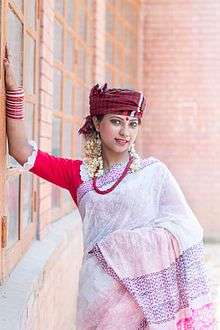
Approximately 98% of the Bangladeshi population are Bengalis. Most are native to East Bengal. The Bengali people have hybrid multiracial origins, including Indo-Aryan, Dravidian, Tibeto-Burman, Middle Eastern and Austroasiatic ancestry. East Bengal was a prosperous melting pot for centuries. It witnessed a synthesis of Islamic, North Indian and indigenous Bengali cultures. Today, Bengalis enjoy strong cultural homogeneity with a common standardized language and a variety of dialects.
90% of the population are Bengali Muslims (146 million). This makes Bangladesh the world's third largest Muslim majority country after Indonesia and Pakistan. Bengali Muslims also make up the world's second largest Muslim ethnic group after Arab Muslims. Most Bangladeshi Muslims are member of the Sunni branch of Islam. There are significant minorities of the Shia and Ahmadiya branches. Bengali Hindus are the largest minority of Bangladesh, with a population between 10-12 million. Bangladesh has the third largest Hindu population in the world after India and Nepal. There are an estimated 500,000 Bengali Christians and 400,000 Bengali Buddhists.
The Bengali population is concentrated in Bengal delta, the coastal areas of Chittagong Division and the river valleys of Sylhet Division.
Non-Bengali Muslims
An estimated 3 million Bangladeshi citizens are non-Bengali Muslim immigrants from different parts of South Asia. They include affluent sections of the country's merchant and business class, particularly Nizari Ismailism adherents.[30] They also include former Stranded Pakistanis and their descendants. Bangladesh's non-Bengali Muslims are usually fluent in both Bengali and Hindustani.
Tribes of the Chittagong Hill Tracts
In southeastern Bangladesh, the Chittagong Hill Tracts frontier has a district history. It was an exclusive zone for Tibeto-Burman tribes in Bengal during the British Raj. Today, the area makes up 10% of Bangladesh's territory. It is home to several indigenous ethnic groups in the three hill districts of Rangamati, Bandarban and Khagrachari. The three largest communities in the region have a Raja as their tribal chief who is recognized by the Government of Bangladesh.
- The Chakma people are the largest tribe of the Chittagong Hill Tracts and the second largest indigenous ethnic group of Bangladesh after Bengalis. A Tibeto-Burman community, they have been greatly influenced by Bengali culture, including in their native Chakma language, a branch of the Bengali-Assamese languages. Most Chakmas are concentrated in Rangamati District. The community is headed by the Chakma Raja. The majority of Chakmas are Therevada Buddhists, with a minority being Hindu.
- The Marma people are second largest community in the Chittagong Hill Tracts. They have a Raja and are concentrated in the districts of Bandarban and Khagrachari. The Marmas are originally Arakanese people who moved to the territory in the 17th century in order to escape Burmese persecution.
- The Mro people are the third largest community in the region and have a Raja. Buddhism, Christianity and animist beliefs are among the chief faiths of the Mros. Their population is concentrated in Bandarban District. Mros are originally related to the Chin people of Myanmar.
- The Tanchangya people are among the oldest native indigenous tribes of the region. They speak the Indo-Aryan Tanchangya language and adhere to Therevada Buddhism.
- The Bawm people are a Tibeto-Burman Christian community. They are among the oldest inhabitants of the region.
- The Tripuri people inhabit much of Khagrachari District. Their population is divided between Bangladesh and their larger indigenous homeland in the Indian state of Tripura.
- The Khumi people are one of the poorest and smallest tribes of the region. They originate from Arakan.
- The Kuki people are the Bangladeshi counterparts of Chins in northern Myanmar and Mizos in northeast India.
Tribes of North and Northeast Bangladesh
There are several Austroasiatic, Tibeto-Burman and Indo-Aryan tribes which inhabit parts of northern and northeastern Bangladesh.
- The Santhal people are the largest aboriginal community of the country. They speak the Austroasiatic Santhali language. Their culture is noted for martial dance traditions. Their population is most concentrated in Rajshahi Division and Rangpur Division. The Santhals have been the focal point of land rights controversies as the Bangladeshi government seeks to develop open pit coal mining in the their tribal hinterlands.
- The Garo people inhabit the Haluaghat Upazila of Mymensingh District. They have high literacy rates and are adherents of Christianity.
- The Bisnupriya Manipuri people are the second largest ethnic group in Sylhet Division. They are adherents of Hinduism and the speak the Indo-Aryan Bishnupriya Manipuri language. Their classical Manipuri dance tradition is a key part of Bangladesh's national culture.
Tribes of Southern Bangladesh
- An Arakanese Rakhine community has resided in Barisal Division for three centuries. They arrived by the sea after escaping Burmese conquests in the 17th century.
Rural society
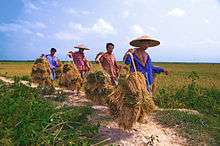
The basic social unit in a village is the family (poribar or gushti), generally consisting of a complete or incomplete patrilineally extended household (chula) and residing in a homestead (bari). The individual nuclear family often is submerged in the larger unit and might be known as the house (ghor). Above the bari level, patrilineal kin ties are linked into sequentially larger groups based on real, fictional, or assumed relationships.[31]
A significant unit larger than that of close kin is the voluntary religious and mutual benefit association known as "the society" (shomaj or milat). Among the functions of a shomaj might be the maintenance of a Mosque and support of a mullah. An informal council of shomaj elders (matabdars or shordars) settles village disputes. Factional competition between the motobdars is a major dynamic of social and political interaction.[31]
Groups of homes in a village are called Paras, and each para has its own name. Several paras constitute a mauza, the basic revenue and census survey unit. The traditional character of rural villages was changing in the latter half of the 20th century with the addition of brick structures of one or more stories scattered among the more common thatched bamboo huts.[31]
Although farming has traditionally ranked among the most desirable occupations, villagers in the 1980s began to encourage their children to leave the increasingly overcrowded countryside to seek more secure employment in the towns. Traditional sources of prestige, such as landholding, distinguished lineage, and religious piety were beginning to be replaced by modern education, higher income, and steadier work. These changes, however, did not prevent rural poverty from increasing greatly.
Urban society

In 2015, 34% of Bangladeshis lived in cities.[32] Dhaka is the largest city in Bangladesh and one of the world's most populous megacities. Other important cities include Chittagong, Sylhet, Khulna, Rajshahi, Jessore, Barisal, Comilla, Narayanganj and Mymensingh. Most urban centers are rural administrative towns. Urban centers grew in number and population during the 1980s as a result of an administrative decentralization program that featured the creation of upazilas.[33]
Identity
Bangladesh is noted for cultural pluralism within a Bengali Muslim majority. Traditional Bengali secularism has been an important contributor to the nation's society and ethos. The Bengali language is a fundamental element of Bangladeshi identity. It is a secular language which evolved between the 7th and 10th centuries, with an indigenous alphabet, and unites people of different faiths and regions. The Bengali Language Movement sowed the seeds of East Pakistani nationalism, ultimately culminating in the Bangladesh Liberation War in 1971. Since independence, the relationship between religion and the state has been controversial. Between 1972 and 1975, Bangladesh experienced socialism under a secular parliamentary system. Military coups ushered a sixteen-year presidential regime, which restored the free market and promoted moderate Islamism. In 1988, Islam was made the state religion. In 2010, the Bangladesh Supreme Court reaffirmed the principle of separation of mosque and state in the constitution, although Islam remains the state religion.[34] The government generally respects freedom of religion and ensures protection for minorities.[34] Another debate on national identity concerns attitudes towards the Chittagong Hill Tracts. A low-level insurgency took place in the region to demand constitutional autonomy against Bengali settlements. Despite a peace treaty in 1997, the Bangladeshi government is yet to implement many of its commitments to protect adivasi land rights. However, the deletion in 1977 of Bangalee as the nationality term for the country's citizens, in order to be inclusive of non-Bengali minorities, also reflects attempts to build a more cosmopolitan Bangladeshi society.
Languages

The official language of Bangladesh is Bengali, which is shared with the neighboring Indian states of West Bengal, Assam and Tripura. Bengali dialects vary between different regions of Bangladesh.
The oldest literary inscription in Bangladesh dates back to the 3rd century BCE. It was found at Mahasthangarh and is written in the Brahmi script. The language is Magadhi Prakrit.[35] The Bengali language developed from Magadhi Prakrit, and its written from Apabhramsa, between the 7th and 10th centuries. It once formed a single eastern Indo-Aryan language with Assamese and Odia, but later became distinct. It became an official language of the Sultanate of Bengal, where it was spoken as the main vernacular language. It absorbed vocubulary from Arabic, Persian and Sanskrit. Bengali is the 10th most spoken language in the world. The language was modernized during the Bengali renaissance in the 19th century. It has influenced other languages in the region, including Chakma, Rohingya, Assamese, Odia and Nepali. The indigenous Bengali alphabets descended from Brahmi serves as the Bengali script.
The Bengali Language Movement in East Pakistan was a key catalyst of forming Bangladeshi identity. It is commemorated by UNESCO as International Mother Language Day, as part of worldwide efforts to preserve linguistic heritage.
Bangladesh is also home to number of minority indigenous languages, including Santhali, Garo, Marma, Chakma and Bisnupriya Manipuri.
History
Antiquity
Bangladesh constitutes the historical territory of East Bengal within the Greater Bengal region. Its inhabitants include people of Indo-Aryan, Dravidian, Austroasiatic and Tibeto-Burman origins. The region is separated from India by the Ganges and Brahmaputra Rivers. This allowed Bengal to develop an independent indigenous civilization. As part of Ancient Bengal, the region of Bangladesh was home to several of the ancient Bengali seafaring kingdoms, including Samatata, Vanga, Gauda, Pundra and Harikela. They were often vassals to the powerful empires of Magadha, particularly the Mauryans and Guptas. Indian religions were practiced in the region, although East Bengal's inhabitants were not members of the wider Hindu social order.[36] Buddhism influenced the region in the first millennium, particularly during the four hundred-year reign of the Pala dynasty.[37] The Palas patronized the flourishing of highly developed sculpture and architecture.[37] The reign of the Palas was succeeded by the Hindu Sena dynasty, which saw the development of Bengali Hindu civilization.[36] The Sena period coincided with the decline of Buddhism in South Asia. The Sena rulers reinforced the caste system. Other Hindu dynasties included the Deva dynasty.
Ancient Bengal was known to the ancient Greeks and Romans as Gangaridai (Nation of Ganges).[38] It was mentioned in numerous Greco-Roman works, including the writings of Megasthenes, Diodorus Siculus, Quintus Curtius Rufus, Plutarch, Pliny the Elder and Claudius Ptolemy. The Periplus of the Erythraean Sea mentions the natural harbours of Chittagong near the mouth of the Ganges as the best seaports in the East.[39] It noted trade routes used by private merchants between Bengal and Roman Egypt dealing in the muslin trade.[40] The high cost of importing Bengali muslin was debated in the Greek and Roman assemblies.[41]
Islamic period

Islam made its first appearance in East Bengal in the last centuries of the first millennium CE, following the spread of Islamic missionaries that started during the lifetime of the Prophet Muhammad. Given the reputation of East Bengal's seafaring kingdoms like Harikela (known to the Arabs as Harkand),[42] its seaports received many of the earliest Islamic missionaries. Trade between East Bengal and the Abbasid Caliphate increased from the 9th century, as evidenced in the excavation of numerous gold coins from the caliphate in the territory of Bangladesh.[43] Mosques from the first millennium have also been discovered in Bangladesh.[44]
Muslim conquests absorbed the entire Bengal region under the Delhi Sultanate. An independent Sultanate of Bengal declared independence from Delhi and established a regional empire in the 14th century. The majority of its administrative centers, known as Mint Towns, were located in East Bengal. The settlement of Sonargaon was recorded by travelers like Ibn Battuta and Niccolo De Conti as the most important political and commercial center in East Bengal. It served as the seat of several of the Sultans of Bengal. The Mughal Empire conquered the region by the 16th century. The Mughals built an imperial metropolis in Dhaka, which was the capital for Mughal Bengal for over seven decades. It brought the Chittagong Hill Tracts under Mughal suzerainty after a treaty with the Chakma Raja in 1713.[45] Due to Mughal protection in the 17th century, various persecuted tribes from Burma settled in the southern and southeastern part of Bengal in the 17th century. The Portuguese were allowed to operate settlements on the coast of Chittagong.
Islamic Bengal was a medieval great power in the East. Its sultans, subedars and nawabs ruled over the wider region, including Bihar, Arakan and Orissa. It was also noted for its large economy and extensive trade and diplomatic networks in Asia and Africa. The eastern part of Bengal, which was the most fertile part of the Bengal delta, became the center of the Muslim population. Islamic rule abolished the caste system. Sufism played a liberating role for many of the region's inhabitants, who were integrated into the Islamic cultural sphere. Mughal-era agrarian reforms increased productivity in East Bengal which further attracted the agriculturalist population into the Islamic mould. Mosques and Sufi monasteries were built across the region. They became centers of promoting ideas of human equality, social reform and solidarity. Islam became known as the religion of the plough in the Bengal delta. Settlers from different parts of the Muslim world migrated to Bengal. They included administrators, soldiers, poets and merchants. They adopted the local Bengali language and culture, making East Bengal a melting pot.[46][47][47] The Bengali Muslims became the majority of East Bengal. Under the Nawabs of Bengal, the region became a hub of international trade among Eurasian merchants in the 18th century, including the Armenians, French, Danish, English and Dutch. Mughal power collapsed as a result of both internal and external shocks. The Nawabs were eventually displaced by European colonialism.[48]
British colonial period
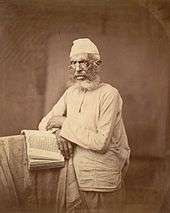
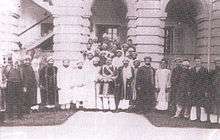
By the late 18th century, the region was controlled by the British Empire's East India Company. Under Company rule in the early 19th century, East Bengal was subjected to devastating colonial policies which destroyed traditional agriculture, textile manufacturing and other industries. Several famine struck the region. The company forced opium and indigo cultivation, which caused local rebellions led by Titumir and Haji Shariatullah. The hardline Islamic Faraizi movement shook British control of East Bengal. The East India Company's policies in the region also led to the Opium Wars with China. East Bengal was a hotbed of the failed Indian Mutiny of 1857.
After the British government established direct control as the British Raj in 1858, Bengal witnessed a period of stability and educational modernization between the late 19th and early 20th centuries. The creation of Eastern Bengal and Assam in 1905 set an important precedent for the future creation of Pakistan and Bangladesh. The All India Muslim League was founded in Dhaka in 1906. The early Muslim League dominated politics in East Bengal, with statesmen such as Nawab Khwaja Salimullah and Sher-e-Bangla A. K. Fazlul Huq. Hindu nationalists such as Surya Sen also led rebel activities in the region. In 1943, Bengal's premier supported the Lahore Resolution calling for the creation of a sovereign state in the eastern zone of British India. British rule ended with the partition of India in 1947, when eastern Bengal was given to the Dominion of Pakistan.
East Pakistan
Initially known as East Bengal (1947-1955), the eastern wing of Pakistan was home to a demographic Bengali majority in the union. Governor General Muhammad Ali Jinnah ignited controversy over the issue of official languages, which led to the Bengali Language Movement. The Awami League was founded in 1949. Several East Pakistani statesmen served as Pakistan's premier in the 1950s, including Khawaja Nazimuddin, Mohammad Ali of Bogra and Huseyn Shaheed Suhrawardy. Land reform was accomplished with the abolishing of the permanent settlement. Dhaka became the largest city in East Pakistan and was declared as country's legislative capital. Chittagong became the chief port and a key commercial centre. The first Pakistani military coup in 1958 ushered the dictatorship of President Ayub Khan. Bengali nationalism rose in East Pakistan during the 1960s. Coupled with movements for democracy, autonomy and independence, an electoral stalemate plunged the union into a constitutional crisis in 1971, when Sheikh Mujibur Rahman was denied the right to form a government despite winning the country's first democratic election. The genocidal operations of the Pakistani military, starting with Operation Searchlight, led to the Bangladesh Liberation War in 1971. The war ended after nine months with a victory for Bangladesh-India Allied Forces.
Bangladesh
.jpg)
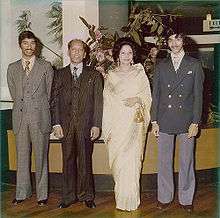
After returning to the newly liberated republic in 1972, Sheikh Mujibur Rahman assumed Bangladesh's premiership. At the Constituent Assembly of Bangladesh, a debate raged over what term to use for Bangladesh's citizens. The government preferred to label all citizens as Bengalis, however this discriminated against the country's indigenous non-Bengali minorities. M. N. Larma, a Chakma lawmaker, made a notable speech demanding the use of the term "Bangladeshi" as the country's nationality. "As citizens of Bangladesh we are all Bangladeshis, but we also have a separate ethnic identity" said Larma.[49]
The Constitution of Bangladesh was enacted in December 1972, proclaiming a secular democracy. The first socialist government of Bangladesh nationalized major industries. A famine struck the country in 1974. Amid rising political agitation, Sheikh Mujibur Rahman enacted a presidential government under a one party state in January 1975. He was assassinated in a military coup by junior army officers in August 1975. A martial law government was later established. Further coups brought Major General Ziaur Rahman to power as the Chief Martial Law Administrator. In 1977, Ziaur Rahman assumed the presidency. Zia founded the Bangladesh Nationalist Party, restored free markets and pursued closer relations with the West. He was assassinated in 1981. Zia was succeeded by Justice Abdus Sattar. After getting an elected mandate in 1982, President Sattar was overthrown by the army chief Hussain Muhammad Ershad amid a growing food crisis. Martial law returned and continued till 1986. Ershad assumed the presidency in 1983. He ruled for nine years, during which Islam was made the state religion. Following mass protests and a caretaker administration in 1990, Bangladesh restored the parliamentary republic. It elected its first female premier Khaleda Zia in 1991. Sheikh Hasina of the Awami League was elected premier in 1996.[50] Khaleda Zia returned to power in 2001. In 2007, the military imposed a state of emergency and two-year caretaker administration after months of street protests. Hasina returned to power in 2008. In 2010, the Bangladesh Supreme Court reaffirmed secularism in the constitution. Elections in 2014 were boycotted by the main opposition BNP, leading to a parliament dominated by the Awami League.
Modern Bangladesh is an emerging economy. However, it faces challenges of political instability, democratic reform,[51] poverty and bureaucratic corruption.
Culture
Bangladeshi culture is a mainly a synthesis of indigenous Bengali and Islamic cultures. Festivals on the both the secular Bengali calendar and the Islamic calendar are widely celebrated. The tribes of the Chittagong Hill Tracts often follow the Burmese calendar, which reflect the country's links with Southeast Asia.
Surnames
Bangladeshis Muslims carry surnames that have Arabic and Persian origins. Bangladeshi Hindus have Sanskritized Bengali surnames. Many Bangladeshi Christians have Portuguese surnames. Buddhists have a mixture of Bengali and Tibeto-Burman surnames.
See also
References
- ↑ "U.S. and World Population Clock". United States Census Bureau. Retrieved October 23, 2015.
- ↑ Migration Profile - Saudi Arabia
- ↑ Migration Profile - UAE
- ↑ 2011 Census: KS201UK Ethnic group, local authorities in the United Kingdom ONS, Retrieved 21 October 2013
- ↑ Migration Profile - Malaysia
- ↑ Migration Profile - Kuwait
- ↑ Migration Profile - Qatar
- ↑ "Bangladesh-Singapore Bilateral Relations". High Commission of Bangladesh, Singapore. Retrieved 30 November 2015.
- ↑ Migration Profile - Oman
- ↑ "Amministrazione Centrale". lavoro.gov.it. Retrieved 11 December 2015.
- ↑ Migration Profile - Bahrain
- ↑ Migration Profile - Maldives
- ↑ Australian Government - Department of Immigration and Border Protection. "The Bangladesh-born Community". Archived from the original on 13 February 2014. Retrieved 14 January 2014.
- ↑ Ethnic Origin (247), Single and Multiple Ethnic Origin Responses (3) and Sex (3) for the Population of Canada, Provinces, Territories, Census Metropolitan Areas and Census Agglomerations, 2006 Census - 20% Sample Data - Statistics Canada.
- ↑ "Profiles on Lawful Permanent Residents: 2013 Country". dhs.gov. Retrieved 11 December 2015.
- ↑ 【在留外国人統計(旧登録外国人統計)統計表】 (Foreigners statistics by nationality), Japan: Ministry of Justice, 2014, retrieved 15 October 2015
- ↑ "체류외국인 국적별 현황", 《통계연보(글내용) < 통계자료실 < 출입국·외국인정책본부》, South Korea: Ministry of Justice, 2014, p. 290, retrieved 15 October 2015
- 1 2 "IRIN Asia - BANGLADESH: Migrants fare badly in Italy - Bangladesh - Economy - Migration". IRINnews. Retrieved 11 December 2015.
- ↑ Состав группы населения «Указавшие другие ответы о национальной принадлежности» -ВПН-2010
- ↑ Ethnologue. "Bangladesh". Ethnologue. Retrieved 6 July 2013.
- ↑ "Chapter 1: Religious Affiliation". The World’s Muslims: Unity and Diversity. Pew Research Center's Religion & Public Life Project. 9 August 2012.
- ↑ "Bangladesh". The World Factbook. CIA. Retrieved 22 December 2014.
- ↑ Bangladesh: Country Profile. Bangladesh Bureau of Educational Information and Statistics (BANBEIS)
- ↑ "৬। নাগরিকত্ব -- গণপ্রজাতন্ত্রী বাংলাদেশের সংবিধান". Retrieved 29 April 2015.
- ↑ http://web.archive.org/web/20121007124849/http://www.unhcr.org/refworld/country,,NATLEGBOD,,BGD,,3ae6b51f10,0.html
- ↑ http://en.banglapedia.org/index.php?title=Chakmas,_The
- ↑ https://www.google.de/webhp?sourceid=chrome-instant&ion=1&espv=2&ie=UTF-8#q=nomo+nomo+nomo+bangladesh+momo&start=0
- ↑ http://www.geetabitan.com/lyrics/A/aaji-bangladesher-hridoy.html
- ↑ https://books.google.com.bd/books?id=cN8rBgAAQBAJ&pg=PA165&dq=ziaur+rahman+nationaility+bangladeshi+constitution&hl=en&sa=X&ved=0ahUKEwiV2-rJhMjOAhVKu48KHRiwD2cQ6AEIKDAC#v=onepage&q=ziaur%20rahman%20nationaility%20bangladeshi%20constitution&f=false
- ↑ https://www.theismaili.org/heritage-expressions/new-dhaka-jamatkhana-seen-symbol-confidence-bangladesh
- 1 2 3 Rahim, Enayetur. "Rural Society". In Heitzman & Worden.
- ↑ https://www.cia.gov/library/publications/the-world-factbook/fields/2212.html
- ↑ Rahim, Enayetur. "Urban Society". In Heitzman & Worden.
- 1 2 http://www.state.gov/documents/organization/171752.pdf
- ↑ http://en.banglapedia.org/index.php?title=Mahasthan_Brahmi_Inscription
- 1 2 http://www.goodreads.com/book/show/310025.The_Rise_of_Islam_and_the_Bengal_Frontier_1204_1760
- 1 2 https://books.google.com.bd/books?id=J7RKoMeAtpUC&printsec=frontcover&dq=pala+empire+bengal&hl=en&sa=X&ved=0ahUKEwiAtpX8gtDOAhVLNI8KHYzQCG0Q6AEIMzAG#v=onepage&q=pala%20empire%20bengal&f=false
- ↑ http://archive.dhakatribune.com/heritage/2014/jul/19/gangaridai-wellspring-bangladesh
- ↑ https://books.google.com.bd/books?id=vWLRxJEU49EC&pg=PA186&redir_esc=y
- ↑ https://books.google.com.bd/books?id=gO9nBwAAQBAJ&pg=PA167&dq=bengali+women+4th++century+bce&hl=en&sa=X&ved=0ahUKEwiX9tjsndHOAhXLsI8KHT2dBowQ6AEIHDAA#v=onepage&q=bengali%20women%204th%20%20century%20bce&f=false
- ↑ http://www.theindependentbd.com/printversion/details/37449
- ↑ https://books.google.com.bd/books?id=nAUBCwAAQBAJ&pg=PA27&lpg=PA27&dq=harikela+arabs+harkand&source=bl&ots=ERyxu_ea-k&sig=M7EjhnrtMuGlKopsyCK2SyusR3M&hl=en&sa=X&ved=0ahUKEwiBgJGqh9DOAhUgSY8KHREQAbkQ6AEINzAG#v=onepage&q=harikela%20arabs%20harkand&f=false
- ↑ http://en.banglapedia.org/index.php?title=Coins
- ↑ http://www.aljazeera.com/video/asia/2012/08/201281852948844588.html
- ↑ Saradindu Shekhar Chakma. Ethnic Cleansing in Chittagong Hill Tracts. p. 23.
- ↑ https://books.google.com.bd/books?id=jTVjWTllOGgC&pg=PA242&dq=caste+system+bengal+islamic+rule&hl=bn&sa=X&redir_esc=y#v=onepage&q=caste%20system%20bengal%20islamic%20rule&f=false
- 1 2 https://books.google.com.bd/books?id=nAUBCwAAQBAJ&pg=PA30&dq=caste+system+bengal+islamic+rule&hl=bn&sa=X&redir_esc=y#v=onepage&q=caste%20system%20bengal%20islamic%20rule&f=false
- ↑ http://archive.dhakatribune.com/heritage/2015/jul/04/dignity-dhaka
- ↑ http://archive.thedailystar.net/forum/2010/september/secularism.htm
- ↑ https://books.google.com.bd/books?id=5lH40gT7xvYC&printsec=frontcover&dq=david+lewis+bangladesh&hl=en&sa=X&ved=0ahUKEwiIudjy5tDOAhUIqY8KHSH4AWMQ6AEIHDAA#v=onepage&q=david%20lewis%20bangladesh&f=false
- ↑ http://www.uplbooks.com/book/bangladesh-poltics-economy-and-civil-society

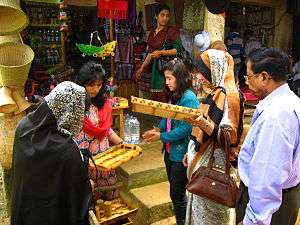

.jpg)
